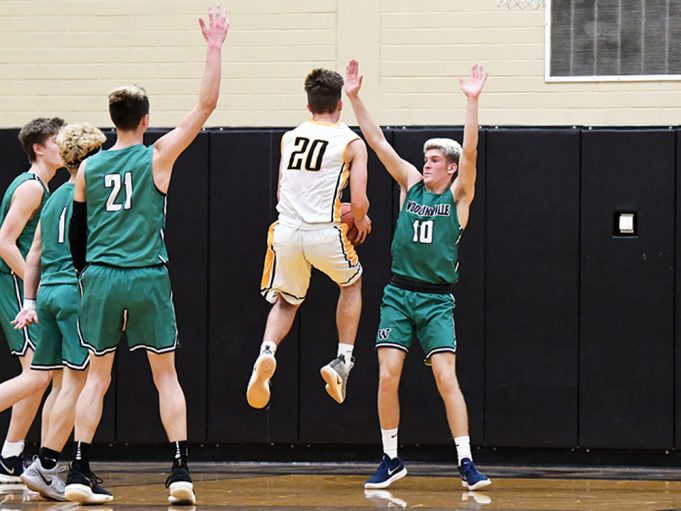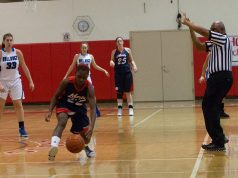A meeting this past season of the Wisconsin Basketball Officials Association (WBOA) saw a lively discussion break out regarding arm positioning as part of a defender’s zone of verticality. The differences of opinion centered around the arms of the defender and what constituted his or her legal verticality positioning in terms of the direction the player extended his or her arms.
The basic components of rule 4-45 regarding verticality include two relevant provisions: Article 3: “The hands and arms of the defender may be raised within his/her vertical plane while on the floor or in the air.” Article 4: “The defender should not be penalized for leaving the floor vertically or having his/her hands and arms extended within his/her vertical plane.”
Sounds simple enough. Still, our lively discussion centered on arm extension in the vertical plane. What constitutes that?
Our clinician for that night’s meeting sided with allowing the defender’s arms to incline forward perhaps 15-20 degrees. I was more of a purist and argued that the arms needed to go “straight up” as a defender to stay in the zone of verticality.
Those in attendance sided with the clinician, and I came around to agree based on a realistic view of what it means to stay in the vertical plane. Most normal people don’t raise their arms straight up. Their arms typically are a bit in front of their torso. That wiggle room makes sense.
Still, even agreeing with that perspective within the constructs of the rule on verticality, there will be judgment involved in this ruling. When does the 15-20 degree arm extension forward become 25 degrees or 30 degrees? If the defender’s arms are at a 45-degree angle in front of his or her body, that would clearly not meet the conditions for verticality.
We must be consistent and effective as officials at judging those slight shifts of the defender’s arms in front of the zone of verticality. When those arms infringe on the offensive player’s territory, you can be confident the defender has likely fouled.
There is no magic formula. You have to be ready and able to defend your position if a coach inquires. That means having it clear in the head of you and your partners beforehand.
Talk about it in your pregame. You may have philosophical differences, so it’s important to air those out and get on the same page (or at least a bit closer to being on the same page). A healthy difference of opinion is completely OK. We had one that night in our meeting.
You will never have perfect synchronicity with your partners on the angle of the arms, but it’s important to get on the same page philosophically and be consistent throughout the game.
The term “vertical plane” is clear, but doesn’t always conform exactly to the contours of the human body. Like the body, we must be flexible as officials while remaining accurate within the intent of the rules.
What's Your Call? Leave a Comment:
Note: This article is archival in nature. Rules, interpretations, mechanics, philosophies and other information may or may not be correct for the current year.
This article is the copyright of ©Referee Enterprises, Inc., and may not be republished in whole or in part online, in print or in any capacity without expressed written permission from Referee. The article is made available for educational use by individuals.


















